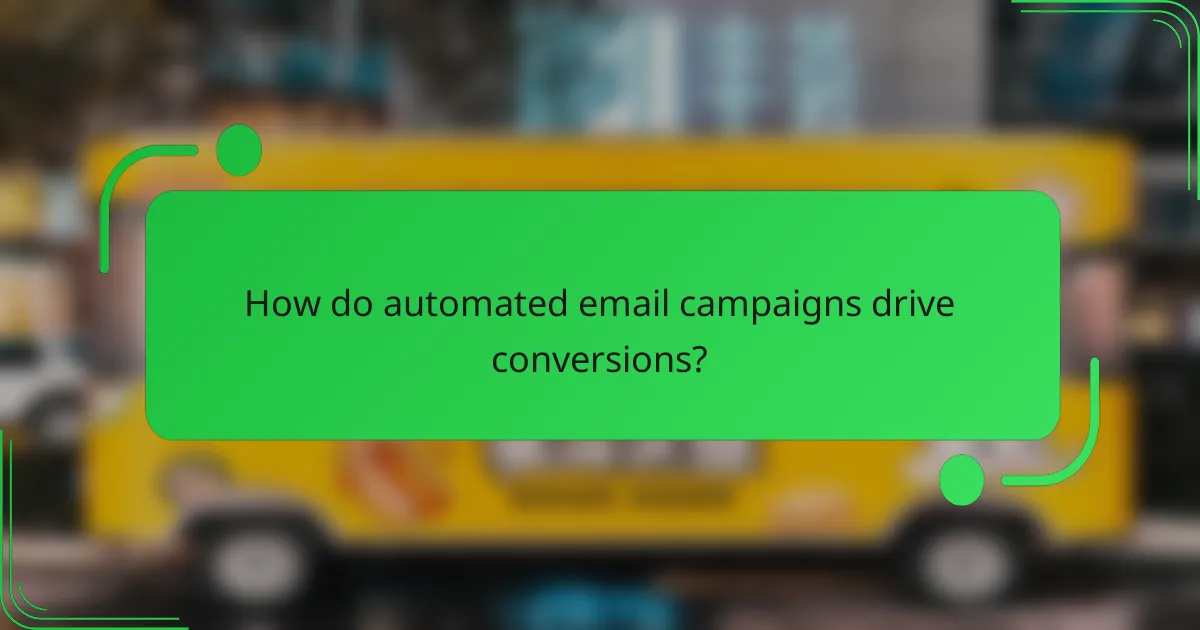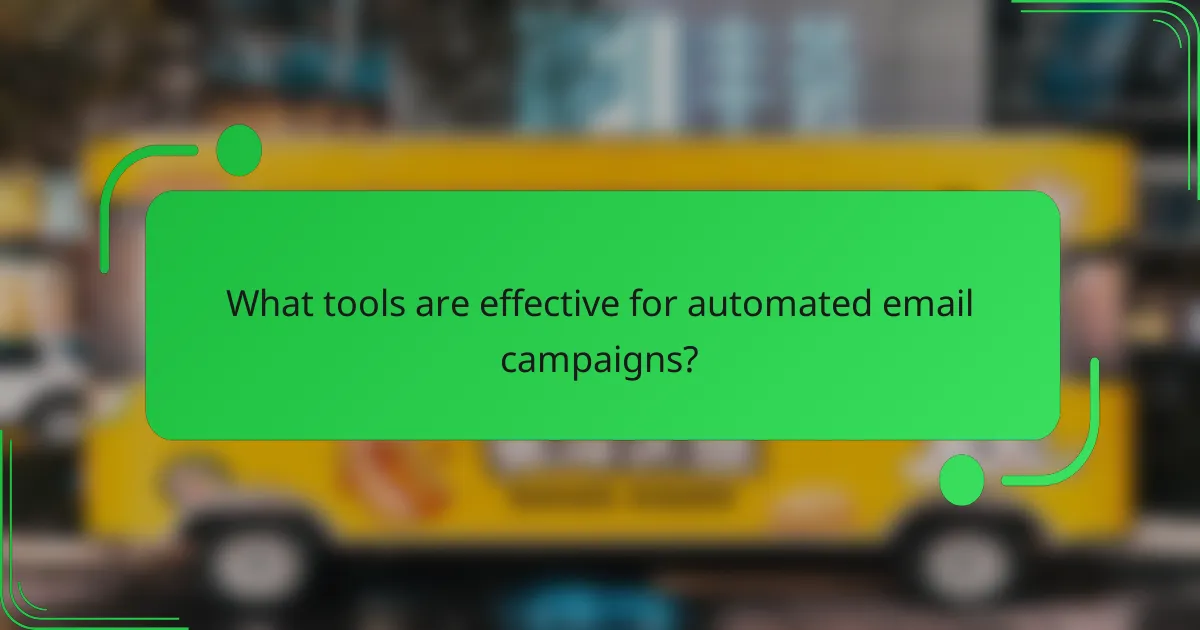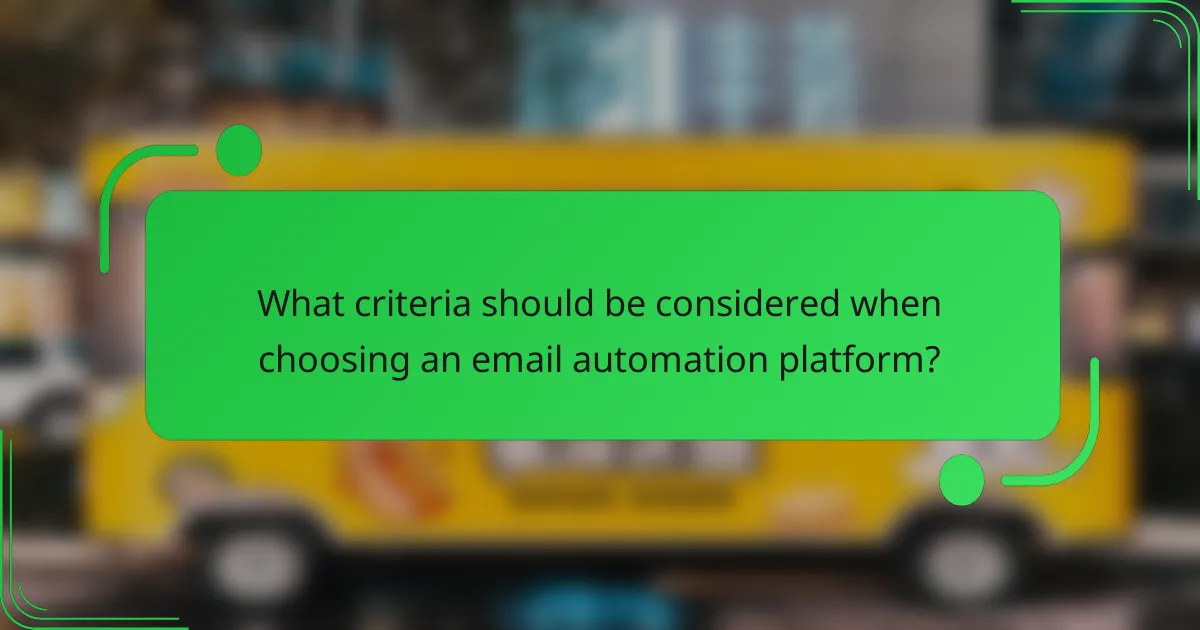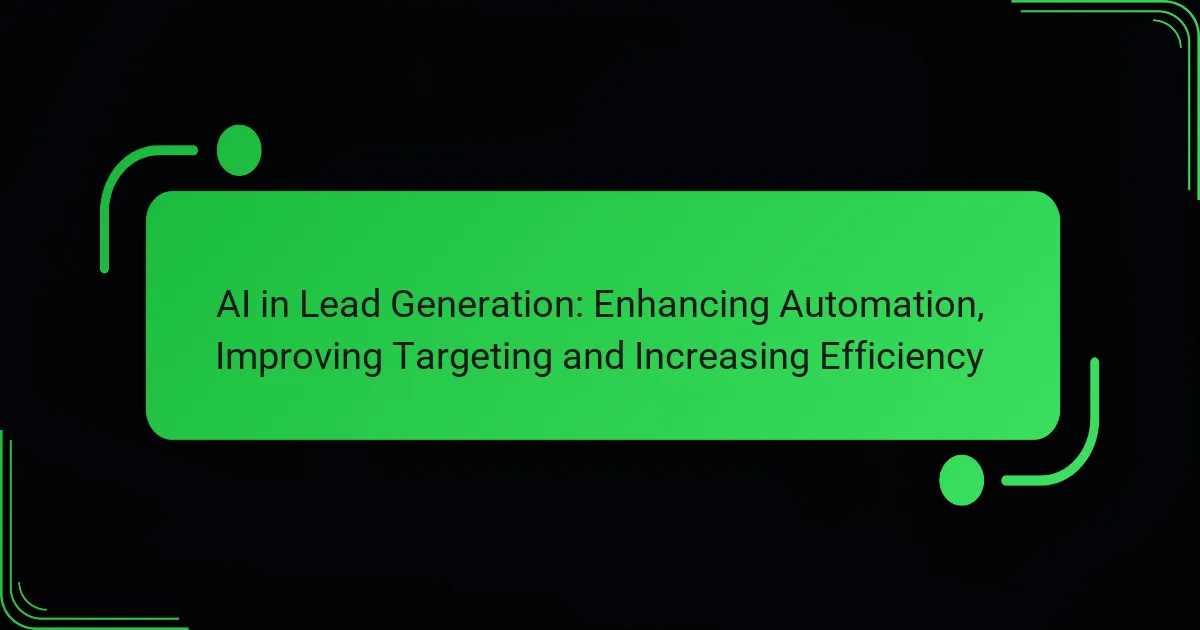Automated email campaigns are a powerful tool for nurturing leads and driving conversions by delivering timely and relevant content that guides potential customers through their buying journey. By leveraging personalization and segmentation, these campaigns effectively engage recipients, ultimately increasing engagement and enhancing the likelihood of purchase.

How do automated email campaigns nurture leads in Canada?
Automated email campaigns nurture leads in Canada by delivering timely, relevant content that guides potential customers through their buying journey. These campaigns leverage personalization and segmentation to engage recipients effectively, ultimately driving conversions.
Personalized content delivery
Personalized content delivery ensures that each recipient receives messages tailored to their interests and behaviors. By using data such as past interactions and preferences, businesses can create targeted emails that resonate with individual leads. For instance, a Canadian retailer might send personalized product recommendations based on previous purchases.
Effective personalization can significantly enhance engagement rates. Emails that include the recipient’s name or suggest products based on browsing history can lead to higher open and click-through rates, fostering a stronger connection with potential customers.
Segmentation strategies
Segmentation strategies involve dividing your email list into smaller groups based on specific criteria, such as demographics, purchase history, or engagement levels. This approach allows marketers to tailor their messaging to each segment, increasing relevance and effectiveness. For example, a company might segment leads by location, sending localized promotions to different provinces in Canada.
Implementing segmentation can improve conversion rates by ensuring that the right message reaches the right audience. Regularly updating and refining segments based on new data helps maintain the effectiveness of campaigns over time.
Behavioral triggers
Behavioral triggers are automated responses based on specific actions taken by leads, such as website visits, email opens, or abandoned carts. These triggers enable timely follow-ups that encourage leads to continue their journey. For instance, if a lead browses a product page but does not make a purchase, an automated email reminder can prompt them to revisit the item.
Utilizing behavioral triggers can enhance the customer experience by providing relevant information at critical moments. It’s essential to monitor these interactions and adjust triggers as necessary to optimize engagement and conversion rates.

What are the best practices for increasing engagement?
To increase engagement in automated email campaigns, focus on creating personalized and relevant content that resonates with your audience. Implementing best practices like compelling subject lines, optimal sending times, and interactive content can significantly enhance open rates and user interaction.
Compelling subject lines
Compelling subject lines are crucial for grabbing attention and encouraging recipients to open your emails. Aim for clarity and curiosity, using action-oriented language that reflects the email’s content. For example, instead of “Newsletter – October Updates,” try “Unlock Exclusive Tips for October!”
Keep subject lines concise, ideally between 6 to 10 words, and consider using personalization techniques, such as including the recipient’s name or location. Avoid spammy words like “free” or “urgent,” which can trigger filters and reduce deliverability.
Optimal sending times
Choosing the optimal sending times for your emails can significantly impact engagement rates. Generally, mid-week days such as Tuesday to Thursday tend to yield higher open rates, while mornings between 10 AM and 11 AM are often effective for many audiences.
However, consider your specific audience’s habits and time zones. Testing different times and analyzing engagement metrics can help you identify the best schedule for your campaigns. Avoid sending emails late at night or during weekends unless your audience is known to engage during those times.
Interactive content
Incorporating interactive content into your emails can boost engagement and make your campaigns more memorable. This can include polls, quizzes, or clickable elements that encourage recipients to participate actively rather than passively reading.
For instance, a simple poll asking for feedback on a recent product can not only engage users but also provide valuable insights. Ensure that interactive elements are mobile-friendly, as a significant portion of users access emails on their smartphones.

How do automated email campaigns drive conversions?
Automated email campaigns drive conversions by delivering timely, relevant content to potential customers, guiding them through the sales funnel. These campaigns leverage targeted messaging and strategic follow-ups to engage leads effectively, ultimately increasing the likelihood of purchase.
Clear calls-to-action
Clear calls-to-action (CTAs) are essential in automated email campaigns, as they direct recipients toward specific actions, such as making a purchase or signing up for a webinar. Effective CTAs should be concise, visually distinct, and placed prominently within the email. For example, using buttons with phrases like “Shop Now” or “Get Started” can significantly enhance click-through rates.
To optimize CTAs, consider A/B testing different phrases, colors, and placements to determine what resonates best with your audience. Aim for a single, focused action per email to avoid overwhelming recipients.
A/B testing strategies
A/B testing is a powerful method for refining automated email campaigns and boosting conversions. By sending two variations of an email to different segments of your audience, you can evaluate which version performs better based on metrics like open rates and click-through rates. Common elements to test include subject lines, email layouts, and content types.
When conducting A/B tests, ensure that you only change one variable at a time to accurately assess its impact. Aim for a sample size that provides statistically significant results, typically in the low hundreds or thousands, depending on your overall audience size.
Follow-up sequences
Follow-up sequences are critical in nurturing leads and driving conversions through automated email campaigns. These sequences can include reminders, additional resources, or personalized offers based on user behavior. For instance, if a lead abandons their shopping cart, a follow-up email with a discount code can encourage them to complete their purchase.
To create effective follow-up sequences, map out customer journeys and identify key touchpoints where additional communication can enhance engagement. Timing is crucial; consider sending follow-ups within a few hours to a couple of days after the initial interaction to maintain momentum and interest.

What tools are effective for automated email campaigns?
Effective tools for automated email campaigns streamline the process of nurturing leads, enhancing engagement, and driving conversions. Popular platforms like Mailchimp, HubSpot, and ActiveCampaign offer various features to help businesses automate their email marketing efforts efficiently.
Mailchimp
Mailchimp is a user-friendly platform ideal for small to medium-sized businesses looking to automate their email campaigns. It provides a range of templates and an intuitive drag-and-drop editor, making it easy to create visually appealing emails.
Key features include audience segmentation, A/B testing, and detailed analytics. Mailchimp also offers a free tier, which is beneficial for startups, allowing users to send a limited number of emails per month without incurring costs.
HubSpot
HubSpot is a comprehensive marketing platform that integrates email automation with CRM capabilities. This tool is particularly effective for businesses focused on inbound marketing, as it allows for personalized email campaigns based on user behavior and lifecycle stages.
HubSpot’s automation workflows enable users to set triggers for emails based on actions such as form submissions or website visits. While it offers a free version, advanced features may require a paid subscription, which can be a consideration for budget-conscious businesses.
ActiveCampaign
ActiveCampaign excels in providing advanced automation features and CRM integration, making it suitable for businesses that require robust email marketing solutions. It allows for complex automation sequences, enabling users to tailor their messaging based on customer interactions.
This platform supports features like predictive sending, which optimizes email delivery times based on user engagement patterns. ActiveCampaign’s pricing is competitive, but it may be more suited for businesses with a larger email list or those looking for sophisticated marketing automation tools.

What criteria should be considered when choosing an email automation platform?
When selecting an email automation platform, consider factors like integration capabilities, pricing models, and user interface. These elements significantly impact the effectiveness and efficiency of your email campaigns.
Integration capabilities
Integration capabilities refer to how well the email automation platform connects with other tools and systems you use, such as CRM software, e-commerce platforms, and analytics tools. A robust integration allows for seamless data transfer, enabling personalized and targeted campaigns.
Look for platforms that offer pre-built integrations with popular services like Salesforce, Shopify, or Google Analytics. This can save time and reduce manual data entry, enhancing your overall marketing strategy.
Pricing models
Pricing models vary widely among email automation platforms, often based on the number of subscribers, features, or email volume. Some platforms offer tiered pricing, while others may charge a flat monthly fee regardless of usage.
Evaluate your budget and expected growth to choose a model that aligns with your needs. Free trials or pay-as-you-go options can be beneficial for testing the platform before committing to a long-term plan.
User interface
A user-friendly interface is crucial for efficiently managing your email campaigns. Look for platforms that offer intuitive navigation, drag-and-drop features, and easy access to analytics and reporting tools.
Consider platforms that provide customizable templates and a clear dashboard for tracking performance. A straightforward interface can significantly reduce the learning curve and help your team focus on creating engaging content rather than struggling with the software.

What are the common challenges in implementing automated email campaigns?
Implementing automated email campaigns often presents challenges such as data privacy compliance, ensuring effective segmentation, and maintaining content relevance. These issues can hinder the success of campaigns if not addressed properly.
Data privacy regulations
Data privacy regulations, such as the General Data Protection Regulation (GDPR) in Europe and the California Consumer Privacy Act (CCPA) in the United States, impose strict guidelines on how businesses collect, store, and use personal data. Compliance with these regulations is crucial to avoid hefty fines and maintain customer trust.
To navigate these regulations, businesses should implement clear consent mechanisms for email subscriptions, provide transparent data usage policies, and allow users to easily opt-out of communications. Regular audits of data practices can help ensure ongoing compliance.
It’s advisable to stay updated on local regulations, as they can vary significantly by region. For example, while GDPR emphasizes user consent, other jurisdictions may have different requirements, making it essential to tailor your approach accordingly.


